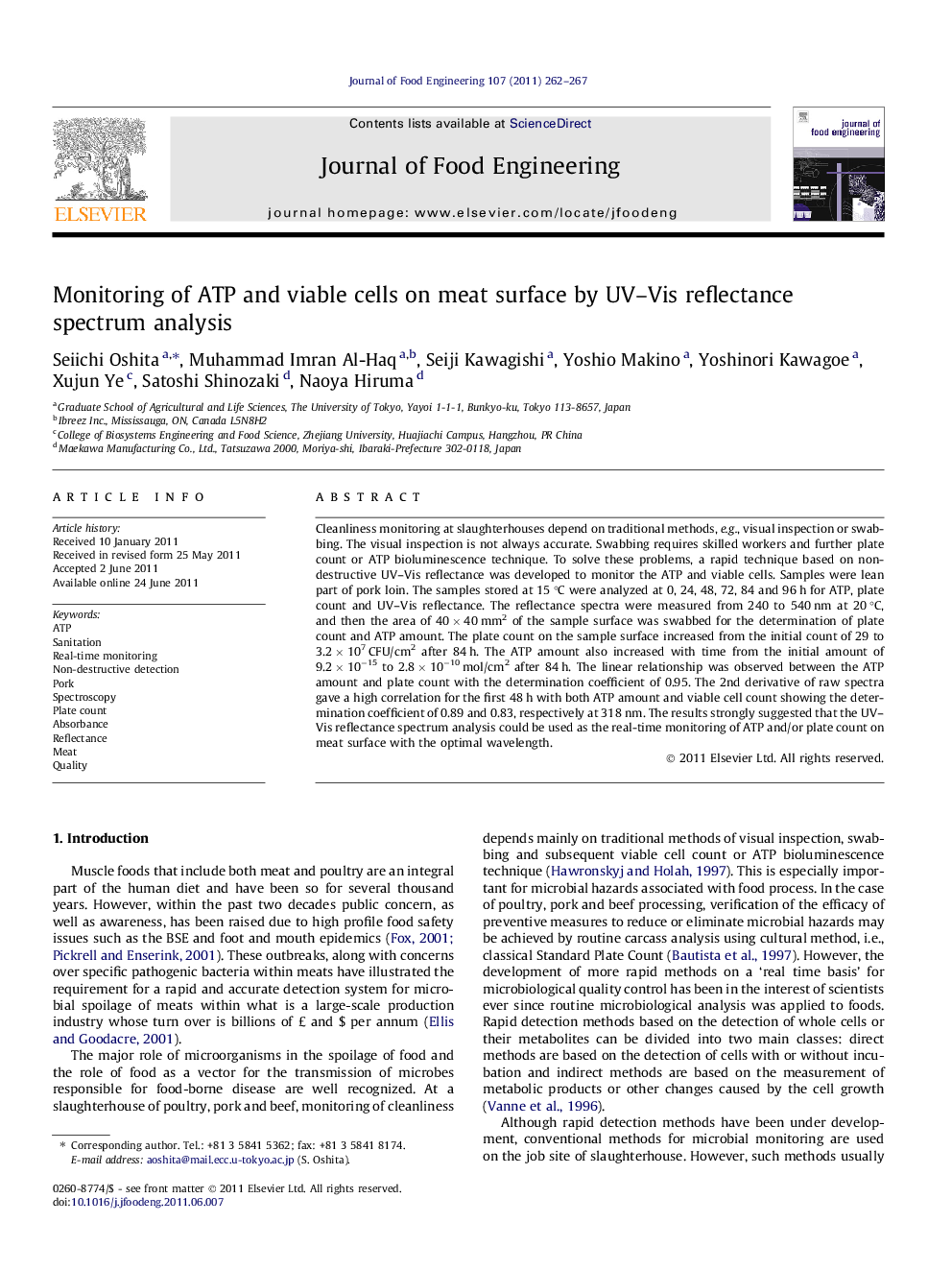| Article ID | Journal | Published Year | Pages | File Type |
|---|---|---|---|---|
| 223923 | Journal of Food Engineering | 2011 | 6 Pages |
Cleanliness monitoring at slaughterhouses depend on traditional methods, e.g., visual inspection or swabbing. The visual inspection is not always accurate. Swabbing requires skilled workers and further plate count or ATP bioluminescence technique. To solve these problems, a rapid technique based on non-destructive UV–Vis reflectance was developed to monitor the ATP and viable cells. Samples were lean part of pork loin. The samples stored at 15 °C were analyzed at 0, 24, 48, 72, 84 and 96 h for ATP, plate count and UV–Vis reflectance. The reflectance spectra were measured from 240 to 540 nm at 20 °C, and then the area of 40 × 40 mm2 of the sample surface was swabbed for the determination of plate count and ATP amount. The plate count on the sample surface increased from the initial count of 29 to 3.2 × 107 CFU/cm2 after 84 h. The ATP amount also increased with time from the initial amount of 9.2 × 10−15 to 2.8 × 10−10 mol/cm2 after 84 h. The linear relationship was observed between the ATP amount and plate count with the determination coefficient of 0.95. The 2nd derivative of raw spectra gave a high correlation for the first 48 h with both ATP amount and viable cell count showing the determination coefficient of 0.89 and 0.83, respectively at 318 nm. The results strongly suggested that the UV–Vis reflectance spectrum analysis could be used as the real-time monitoring of ATP and/or plate count on meat surface with the optimal wavelength.
► A monitoring method of ATP and viable cell by UV-Vis spectroscopy was developed. ► The linear relationship was observed between the ATP amount and plate count. ► The 2nd derivative at 318 nm gave a correlation with both ATP and viable cell.
